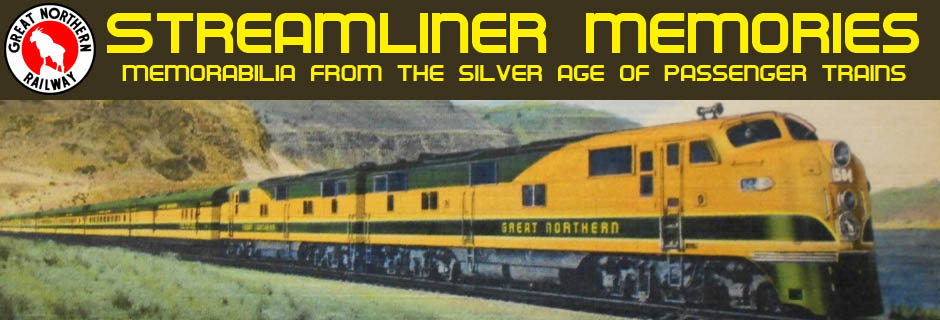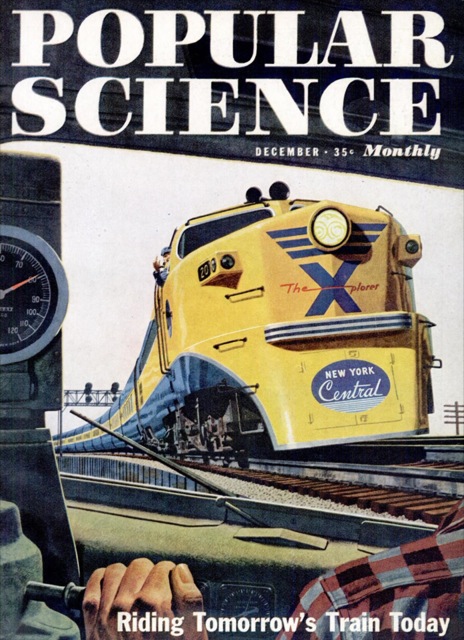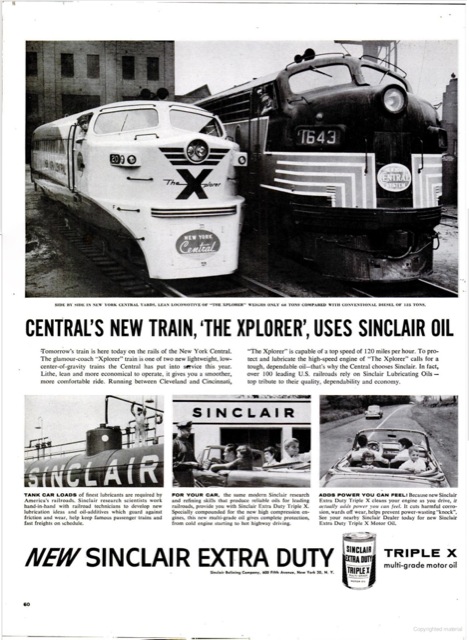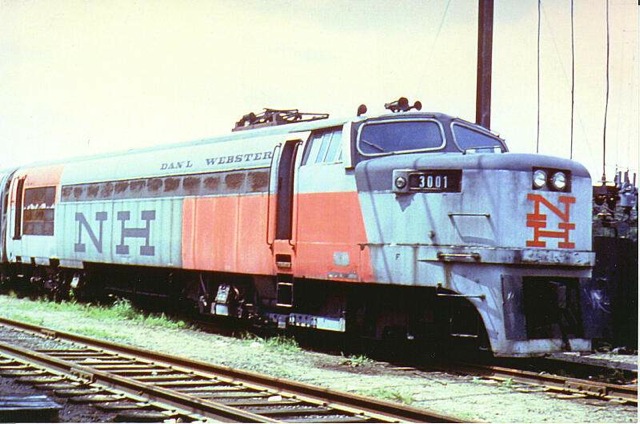Patrick McGinnis’ second new train for the New Haven was built by Pullman in an obvious imitation of the 1949 ACF Talgo train. Pullman called its design “Train X” and like the 1949 train had just one axle, or two wheels, on most of the cars. Only the center car had two axles so that the end cars could each have an axle on the end of the train. Train X cars also used a passive tilt system so that passengers could experience a more comfortable ride going around corners.
This publicity photo of the New York Central’s Xplorer was taken by company photographer Ed Nowak. Click image for a somewhat larger view.
The train was pulled by two 1,000-hp locomotives, one on each end, built by Baldwin-Lima-Hamilton, the company the resulted from the merger of what had once been two of the largest steam locomotive builders in the world. These may have been the last locomotives Baldwin built; the company continued to make parts but went out of business about a decade later.
Popular Science magazine promised that passengers on the Xplorer would experience a “smoother, more comfortable” ride. To put it kindly, this turned out to be optimistic. New York Central tracks between Cincinnati and Cleveland used ordinary jointed rail, and the lightweight cars bounced around so much that motion sickness was a potential problem. Click image to download a 1.7-MB PDF of this six-page Popular Science article.
One of the problems with all of McGinnis’ new trains was that pollution ordinances required trains entering Grand Central Terminal to use electric power. That shouldn’t have been a problem as most Diesel locomotives use the Diesels to generate electricity that powers electric motors that turn the wheels. But the Baldwin locomotives relied on a hydraulic transmission instead of electric motors, so these locomotives had to also include two 150-hp traction motors that could pick up electricity from a third rail and move the train slowly into and out of Grand Central.
To make matters worse, the Dan’l Webster caught fire when it attempted to use the third rail in Grand Central Terminal during a publicity run on January 8, 1957. The train was to go into regular service the next day, but the fire and other problems delayed this until March 25, the same day the John Quincy Adams was placed in service.
This advertisement brags that the Xplorer can go 120 mph. But the New York Central didn’t have the signalling required for such fast trains, so the train was limited to 79 mph. Higher speeds probably just would have induced motion sickness in more passengers. Click image for a larger view.
The New York Central preceded the New Haven with a nearly identical train from Baldwin and Pullman. Calling it the Xplorer, an obvious reference to Train X, the Central put the train to work between Cleveland and Cincinnati starting on June 3, 1956, several months before the New Haven’s train began operating on a 5.5-hour schedule, an average speed of just 45 mph. (A planned start on May 17 was delayed to try to fix problems with poor ride quality.)
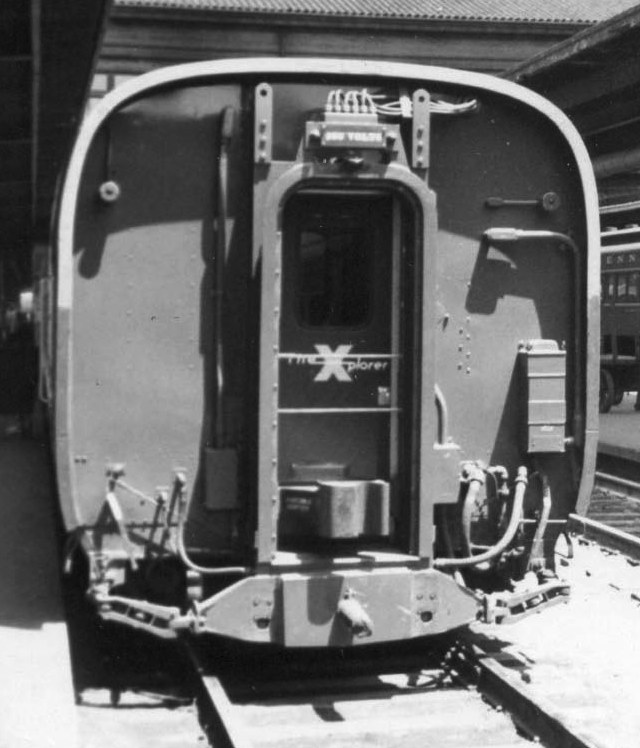
A small “Xplorer” sign is the only decorative concession to this being the last car on the train. Photo by Alex Campbell.
The main difference between the New Haven and New York Central trains was that the latter used only one locomotive, which probably left the train underpowered and definitely reduced the ride quality as the extra weight of the second locomotive would have stabilized the rear of the train. Pullman made no effort to put a round end on the last car as the locomotive would probably pull the train from either end.
One of Marcel Breuer’s designs for a paint scheme for the Dan’l Webster, though judging from the photo below it is not the one that was selected.
The New York Central took the Xplorer out of service on August 17, 1957, after less than 15 months of operations. The New Haven also stopped running the Dan’l Webster between Boston and New York after less than 15 months of service on June 5, 1958. Both were sold in 1960 to a tourist train operator in South Carolina who eventually scrapped them.
This photo of a rather beat-up Baldwin locomotive was taken after the Dan’l Webster had been withdrawn from service. Click image for a somewhat larger view.
